How to Grow Cassava: Avoid Common Pitfalls for a Bountiful Harvest
- March 18, 2024
- 0 comment
Learn How to Grow Cassava, scientifically known as Manihot esculenta, is a tropical root crop renowned for its versatility and resilience. Often hailed as the bread of the tropics, it is a staple food for millions around the globe. This guide provides a comprehensive overview of how to grow cassava, ensuring a bountiful harvest.
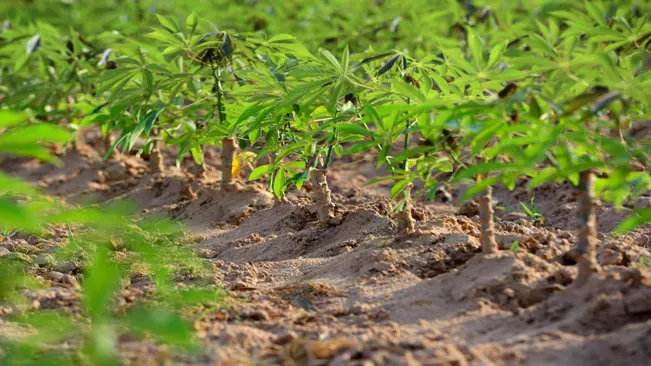
Benefits of Cassava
| Benefit | Description |
|---|---|
| Nutritional Value | Cassava is a significant source of carbohydrates and provides some essential vitamins and minerals, particularly Vitamin C, calcium, and magnesium. |
| Gluten-Free | Ideal for those with gluten intolerance or celiac disease, cassava flour is a great gluten-free alternative to wheat flour. |
| Energy-Rich Food | Due to its high carbohydrate content, cassava is an excellent source of energy, making it a staple food in many developing countries where energy requirements are high. |
| Versatility in Cooking | Cassava can be boiled, baked, fried, or processed into various forms like flour, chips, and tapioca pearls, making it a versatile ingredient in numerous cuisines. |
| Drought Resistance | Cassava can grow in poor soil conditions and withstand prolonged periods of drought, making it a crucial crop in areas with challenging growing conditions. |
| Economic Value | Cassava is an important cash crop in many developing countries. Its versatility allows it to be used in various industries, including food, feed, and biofuel production, contributing significantly to local and national economies. |
| Rich in Fiber | The high dietary fiber content in cassava aids in digestion and helps maintain a healthy gut, reducing the risk of digestive disorders. |
| Low Fat and Cholesterol-Free | Cassava is naturally low in fat and cholesterol, making it a healthy staple food option for a heart-friendly diet. |
| Supports Gluten-Free Diets | Cassava flour is a popular alternative for gluten-free cooking and baking, providing a safe option for those with gluten sensitivities. |
| Culinary Diversity | Cassava introduces diversity into the diet and can be used to create a variety of traditional and innovative dishes, enriching culinary experiences around the world. |
| Potential for Industrial Use | Beyond food, cassava is used in various industries for the production of biofuels, animal feed, and starches used in textiles and adhesives, showcasing its versatile industrial potential. |
List on How To Grow Cassava
- Understanding Cassava
- Climatic and Soil Requirements
- Planting Cassava
- Caring for Cassava Plants
- Harvesting Cassava
- Post-Harvest Handling
Understanding Cassava
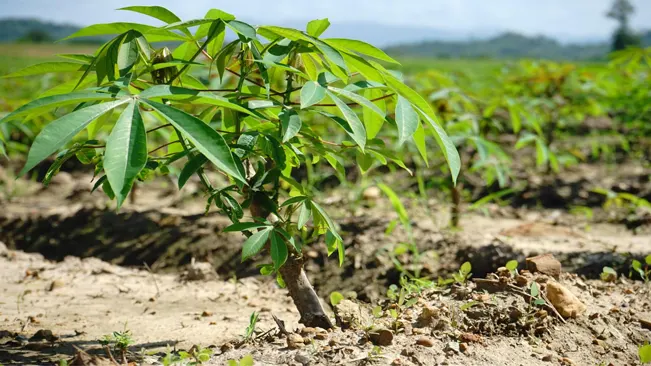
Origins and Spread
- Native to South America, cassava has a long history dating back thousands of years. It was a staple food for indigenous peoples before it was introduced to Africa in the 16th century by Portuguese traders. In Africa and Asia, it quickly became an essential crop due to its adaptability to various climates and soil types.
Botanical Characteristics
- Cassava, scientifically known as Manihot esculenta, is a perennial woody shrub that can grow up to 1-3 meters in height. The plant has large, lobed leaves, and its most valuable parts are the tuberous roots, which grow underground.
Cultivation and Resilience
- One of the most remarkable features of cassava is its ability to thrive in marginal soils where many other crops cannot. It can tolerate acidic soils and minimal rainfall, making it an ideal crop in challenging environments and a lifeline for subsistence farmers.
- Cassava is propagated primarily through stem cuttings rather than seeds. This method allows for faster cultivation and a more predictable yield.
Nutritional Profile
- The roots of cassava are predominantly composed of carbohydrates, particularly starch. They are an excellent energy source but are low in protein and other nutrients.
- Interestingly, cassava leaves are quite nutritious. They are a good source of dietary protein, vitamins (especially Vitamin A and Vitamin C), and minerals like iron and calcium. In many cultures, the leaves are consumed as a green vegetable, complementing the carbohydrate-rich roots.
Toxicity and Processing
- Cassava roots contain compounds called cyanogenic glycosides, which can release cyanide when the plant is damaged or eaten raw. Therefore, it is crucial to process cassava correctly before consumption. Traditional methods include soaking, cooking, fermenting, and drying, which reduce the toxicity to safe levels.
- There are two main types of cassava: sweet (or low-cyanide) and bitter (or high-cyanide). Sweet cassava requires less processing and is often used for direct consumption, while bitter cassava, containing higher levels of cyanogenic glycosides, is more suitable for processing into flour and other derivatives.
Economic and Cultural Significance
- Beyond its role as a food source, cassava has significant economic and cultural importance in many regions. It is a staple in diets across Africa, Asia, and Latin America and is celebrated in various cultural dishes and ceremonies.
- The crop’s ability to withstand harsh conditions makes it a security crop against climate change and economic fluctuations, providing a reliable source of food and income.
Versatility in Usage
- Cassava is not only a versatile food crop but also has numerous industrial applications. Its starch is used in the textile, paper, and pharmaceutical industries, and it is a potential source for biofuel production.
Climatic and Soil Requirements
Cassava prefers a tropical or subtropical climate with temperatures ranging from 25 to 29 degrees Celsius. It requires at least eight months of warm weather to produce a good yield. The ideal soil is well-drained, sandy loam with a pH between 5.5 and 6.5. Cassava is drought-tolerant but requires adequate moisture for optimal growth.
Climatic Requirements
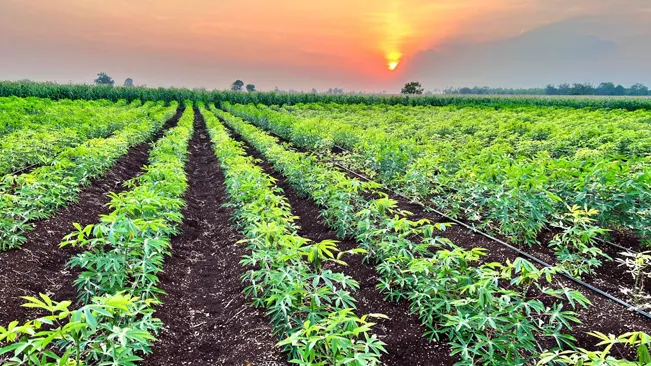
- Temperature Range: Cassava thrives in warm temperatures, ideally between 25 to 29 degrees Celsius. This range is critical for optimal growth and development of the roots. Temperatures below 20 degrees Celsius can slow down its growth, and frost can be damaging.
- Rainfall and Humidity: While cassava is drought-resistant, it benefits from regular rainfall. An annual rainfall of 1000 to 1500 mm is considered ideal. However, it can tolerate periods of low rainfall due to its deep root system. High humidity levels are also favorable, reflecting its tropical origin.
- Sunlight: Cassava requires full sunlight for most of the day. This aids in the efficient photosynthesis process and contributes to the development of the starchy roots.
- Length of Growing Season: Cassava needs a prolonged growing season of at least eight months without frost. In regions where the growing season is shorter, it’s important to plant early and choose varieties with a shorter maturation period.
Soil Requirements
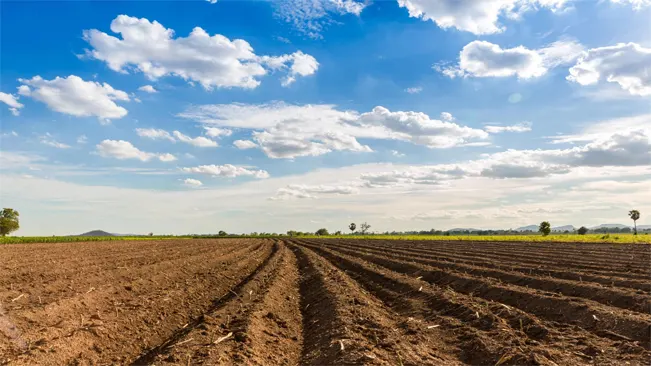
- Soil Type: The best soil type for cassava is a well-drained sandy loam. It can tolerate a range of soil types but does poorly in heavy clay soils due to poor drainage.
- Soil pH: Soil pH plays a crucial role in the availability of nutrients. Cassava prefers slightly acidic to neutral soil, with a pH range of 5.5 to 6.5. Outside this range, some nutrients may become less available to the plant.
- Soil Fertility: While cassava can grow in poor soils, it performs better in moderately fertile soils. Soil rich in organic matter benefits the growth. However, too much nitrogen can promote more leaf growth at the expense of root development.
- Water Drainage: Adequate drainage is essential. Waterlogged conditions can lead to root rot and other fungal diseases. While cassava can withstand drought, consistent moisture (not waterlogging) is important, especially during the root formation and bulking-up stages.
Planting Cassava
Choosing Cuttings
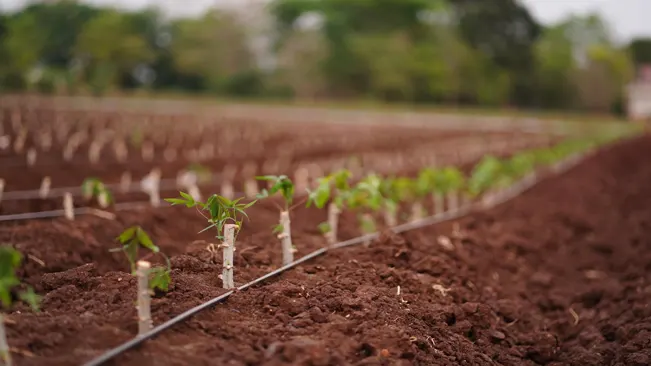
- Selection Criteria: The success of your cassava crop begins with the choice of cuttings. It’s crucial to select cuttings from healthy, disease-free, and high-yielding mature cassava plants. A mature cassava plant is typically around 8-12 months old.
- Cutting Length: Each cutting should measure approximately 20-30 cm. This length ensures that each cutting has enough stored energy and nodes to sprout effectively.
- Node Count: A minimum of five nodes is essential. Nodes are the points on the stem where leaves emerge and are crucial for root and shoot development.
Preparation and Planting

- Field Preparation: Prior to planting, prepare the field by clearing it of weeds and debris. The soil should be loosened and well-drained to encourage root growth. Incorporating organic matter can enhance soil fertility.
- Planting Method: Insert cuttings about two-thirds deep into the soil. Planting at a 45-degree angle helps maximize exposure to sunlight and promotes better sprouting from the nodes.
- Spacing: Proper spacing is key to the growth of cassava. About 1 meter between plants and rows is recommended. This spacing prevents overcrowding, allowing each plant sufficient access to sunlight, water, and nutrients.
- Depth of Planting: The depth at which cuttings are planted affects the development of the roots. Too shallow, and the cuttings may not anchor well; too deep, and sprouting might be impaired.
Time of Planting
- Seasonal Timing: The onset of the rainy season is the ideal time to plant cassava. This period usually ensures that the cuttings receive adequate moisture to initiate growth.
- Regional Variations: The exact timing may vary based on local climatic conditions. In regions with distinct wet and dry seasons, planting should coincide with the start of the rains. In more uniform climates, cassava can be planted year-round, provided there is sufficient water.
Caring for Cassava Plants
Weeding
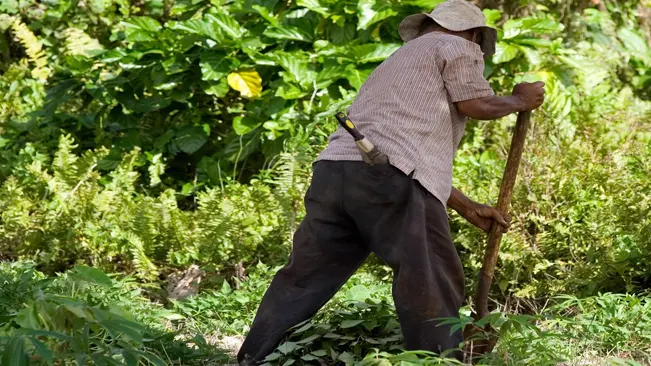
- Importance: In the early growth stages, cassava plants are relatively weak competitors. Weeds can significantly affect their growth by competing for nutrients, water, and light.
- Method: Hand weeding is the most common method. It’s important to weed regularly until the cassava plants are well established and can outcompete the weeds.
- Frequency: Weeding should be done every 4-6 weeks or as needed, especially during the first 3 months after planting.
Watering

- Drought Resistance: Cassava’s ability to withstand drought conditions is one of its key strengths. It can survive in areas with low rainfall.
- Water Requirements: Despite its drought tolerance, for optimal growth, cassava benefits from consistent moisture, particularly during the root bulking phase.
- Irrigation: In areas with irregular rainfall, supplemental irrigation during prolonged dry spells can enhance growth and yield. However, avoid waterlogging as cassava does not tolerate standing water.
Pest and Disease Management
- Common Pests: The most prevalent pests include cassava green mite and mealybugs, which can cause significant damage if not managed.
- Common Diseases: Cassava Mosaic Disease (CMD) and Cassava Brown Streak Disease (CBSD) are the most serious diseases. CMD causes leaf distortion, reducing photosynthesis efficiency, while CBSD affects the root quality.
- Cultural Practices: These include selecting healthy cuttings, practicing crop rotation, and maintaining field hygiene to reduce the risk of pests and diseases.
- Biological Control: This involves using natural predators or parasites to control pests. For example, introducing natural enemies of the cassava green mite or using virus-resistant cassava varieties for disease management.
- Chemical Control: Use of pesticides should be minimal and only as a last resort due to environmental concerns and potential impacts on human health. Focus more on integrated pest management strategies.
Harvesting Cassava
The harvesting time for cassava is quite flexible, ranging from 9 to 24 months after planting. The exact timing depends on the variety and intended use. Shorter durations are preferred for tender, lower-starch roots often used in cooking, while longer periods allow starch content and root size to increase, beneficial for commercial and industrial uses.
Identifying Harvest Readiness
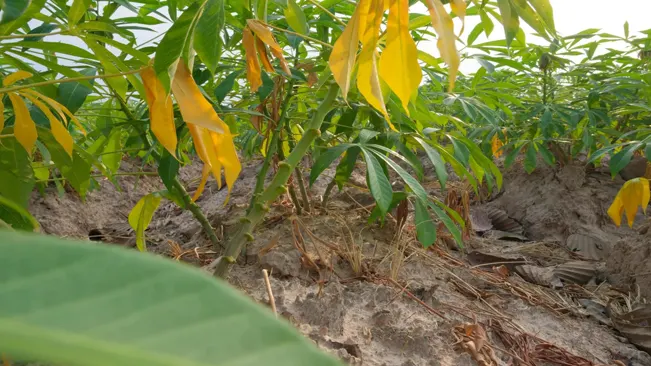
- Visual Indicators: Look for yellowing leaves and cracks in the soil around the base of the plant, indicating that the roots are mature.
- Root Size: Gently unearth a portion of a root from a representative plant. If the size and starch content meet your requirements, it’s time to harvest.
Harvesting Method

- Uprooting: Cassava is harvested by uprooting the entire plant. This can be done manually for small-scale cultivation or using mechanized tools for large fields. It’s important to handle the roots gently to avoid bruising or breaking them, as damaged roots spoil quickly.
- Detaching the Roots: Once the plant is uprooted, remove the roots from the stem. The stems can be saved for replanting if you plan to continue cultivation.
- Cleaning and Handling: Clean the harvested roots of soil and debris. Be gentle to prevent any damage to the skin of the roots.
Post-Harvest Handling
Processing of Cassava
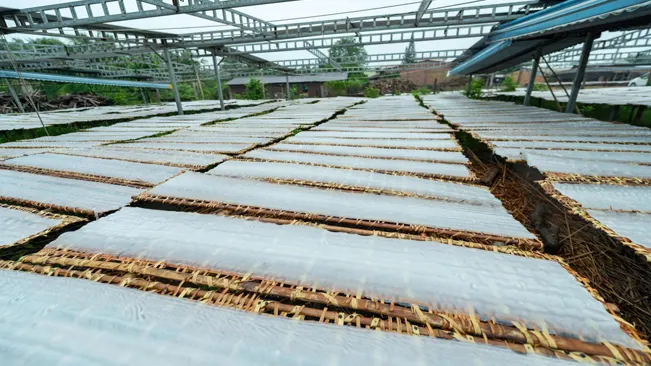
- Purpose of Processing: Fresh cassava roots contain cyanogenic glycosides, which can release cyanide and are toxic if not properly processed. Processing not only reduces these compounds but also extends the shelf life of the roots, which otherwise deteriorate quickly.
- Methods of Processing:
- Drying: Cassava can be sliced and sun-dried to make cassava chips, a popular snack or animal feed.
- Fermentation: Fermenting cassava roots for a few days is common in traditional methods, helping reduce toxins and improve flavor.
- Milling into Flour: Cassava roots are peeled, dried, and then ground into flour, which is a versatile ingredient in gluten-free recipes.
- Gari Production: This involves peeling, washing, grating, fermenting, and then roasting or frying grated cassava to make gari, a West African staple.
- Tapioca Making: Cassava starch extracted from the roots is processed into pearls or flakes, commonly known as tapioca, used in puddings and as a thickening agent.
- Safety Considerations: Proper processing is crucial to remove potentially harmful cyanide compounds. Each step, from peeling to final processing, helps reduce these levels, making cassava safe for consumption.
Storage of Cassava
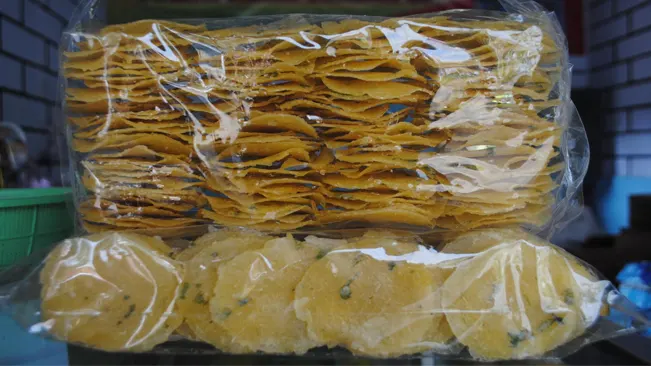
- Storing Fresh Cassava:
- Short-term Storage: Fresh cassava roots can be stored for a short period (a few days to a week) in a cool, dry place.
- Traditional Methods: In some regions, fresh cassava roots are buried in pits or covered with soil. This method can extend their shelf life for several weeks.
- Storing Processed Cassava:
- Dried Products: Dried cassava chips or flour should be stored in airtight containers to prevent moisture absorption and insect infestation.
- Gari and Tapioca: These processed forms should also be kept in cool, dry conditions. Gari can be stored for several months.
- Impact of Processing on Storage: Processing transforms cassava into forms that are not only safer to eat but also more stable for storage. Drying, fermenting, and milling significantly increase the shelf life and reduce the risk of spoilage.
- Economic and Nutritional Significance: Efficient post-harvest handling and processing of cassava are vital for maintaining its nutritional value and economic worth. It ensures a consistent supply of cassava products throughout the year, even in regions with distinct dry and rainy seasons.
Related Post:
- How to Plant Water Spinach Seeds: Thrive in Your Garden
- How to Plant Durian: A Step-by-Step Guide to Cultivating the King of Fruits
- How to Grow Breadfruit: Essential Tips for a Thriving Tree
- How to Grow Jackfruit: A Beginner’s Guide
- How to Grow Ground Cherry: Simple Steps for Lush Growth
- How to Grow Spaghetti Squash: Your Thriving Garden Guide 2024
- How to Grow Runner Beans: A Comprehensive Guide for Bountiful Harvests
- How to Grow Jicama: Your Easy Guide to Cultivating the Mexican Yam Bean
- How to Grow Cinnamon Basil: A Beginner’s Guide to Aromatic Gardening
Conclusion
Growing cassava can be rewarding and profitable, particularly in regions with challenging agricultural conditions. With its minimal requirements and versatility, cassava stands as a symbol of hope and sustenance for millions. By following these guidelines, farmers and enthusiasts can cultivate this vital crop successfully.
FAQs (Frequently Asked Questions)
- What is the best climate for growing cassava?
- Cassava thrives in tropical and subtropical climates with temperatures between 25 to 29 degrees Celsius. It requires a warm and humid environment for optimal growth.
- Cassava thrives in tropical and subtropical climates with temperatures between 25 to 29 degrees Celsius. It requires a warm and humid environment for optimal growth.
- How do I select the right cassava cuttings for planting?
- Choose healthy, disease-free stem cuttings from a mature cassava plant. The cuttings should be about 20-30 cm long with a minimum of five nodes.
- Choose healthy, disease-free stem cuttings from a mature cassava plant. The cuttings should be about 20-30 cm long with a minimum of five nodes.
- What type of soil is suitable for cassava?
- Well-drained, sandy loam soil with a pH between 5.5 and 6.5 is ideal. Cassava can tolerate poor soils but performs best in nutrient-rich conditions.
- Well-drained, sandy loam soil with a pH between 5.5 and 6.5 is ideal. Cassava can tolerate poor soils but performs best in nutrient-rich conditions.
- How do I plant cassava cuttings?
- Plant cuttings by inserting them about two-thirds deep into the soil at a 45-degree angle. Ensure adequate spacing of about 1 meter between plants and rows.
- Plant cuttings by inserting them about two-thirds deep into the soil at a 45-degree angle. Ensure adequate spacing of about 1 meter between plants and rows.
- When is the best time to plant cassava?
- The onset of the rainy season is the ideal time to plant cassava since it coincides with the start of its growing period.
- The onset of the rainy season is the ideal time to plant cassava since it coincides with the start of its growing period.
- Does cassava require a lot of water?
- Cassava is drought-resistant, but regular watering during prolonged dry spells promotes better growth. Avoid waterlogging as it can harm the plant.
- Cassava is drought-resistant, but regular watering during prolonged dry spells promotes better growth. Avoid waterlogging as it can harm the plant.
- How do I manage pests and diseases in cassava?
- Regularly inspect for signs of pests like cassava mosaic virus and diseases such as cassava brown streak disease. Use cultural practices and biological controls for management.
- Regularly inspect for signs of pests like cassava mosaic virus and diseases such as cassava brown streak disease. Use cultural practices and biological controls for management.
- When is cassava ready to harvest?
- Cassava is usually ready for harvest between 9 to 24 months after planting, depending on the variety and purpose. Signs of readiness include yellowing leaves and cracks in the soil around the base of the plant.
- Cassava is usually ready for harvest between 9 to 24 months after planting, depending on the variety and purpose. Signs of readiness include yellowing leaves and cracks in the soil around the base of the plant.
- How should I harvest cassava?
- Carefully uproot the entire plant by hand or with tools, taking care not to damage the roots. Harvesting can be labor-intensive and requires careful handling.
- Carefully uproot the entire plant by hand or with tools, taking care not to damage the roots. Harvesting can be labor-intensive and requires careful handling.
- What should I do with the cassava after harvesting?
- Fresh cassava roots should be processed or consumed within a couple of days to prevent spoilage. Processing into flour, chips, or other products can extend shelf life. Store processed cassava in a cool, dry place.

Kristine Moore
Forestry AuthorI'm Kristine Moore, a seasoned garden landscaping professional with over 30 years of experience. My extensive career has been dedicated to transforming outdoor spaces into stunning, sustainable landscapes. With a deep understanding of horticulture, design principles, and environmental stewardship, I have become a respected figure in the field, known for creating harmonious, visually appealing, and eco-friendly gardens. My commitment to excellence and continuous learning in landscaping trends and techniques has solidified my reputation as an expert in garden design and implementation.






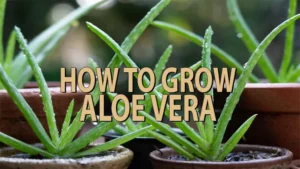

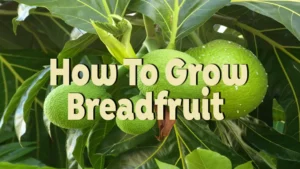




Leave your comment